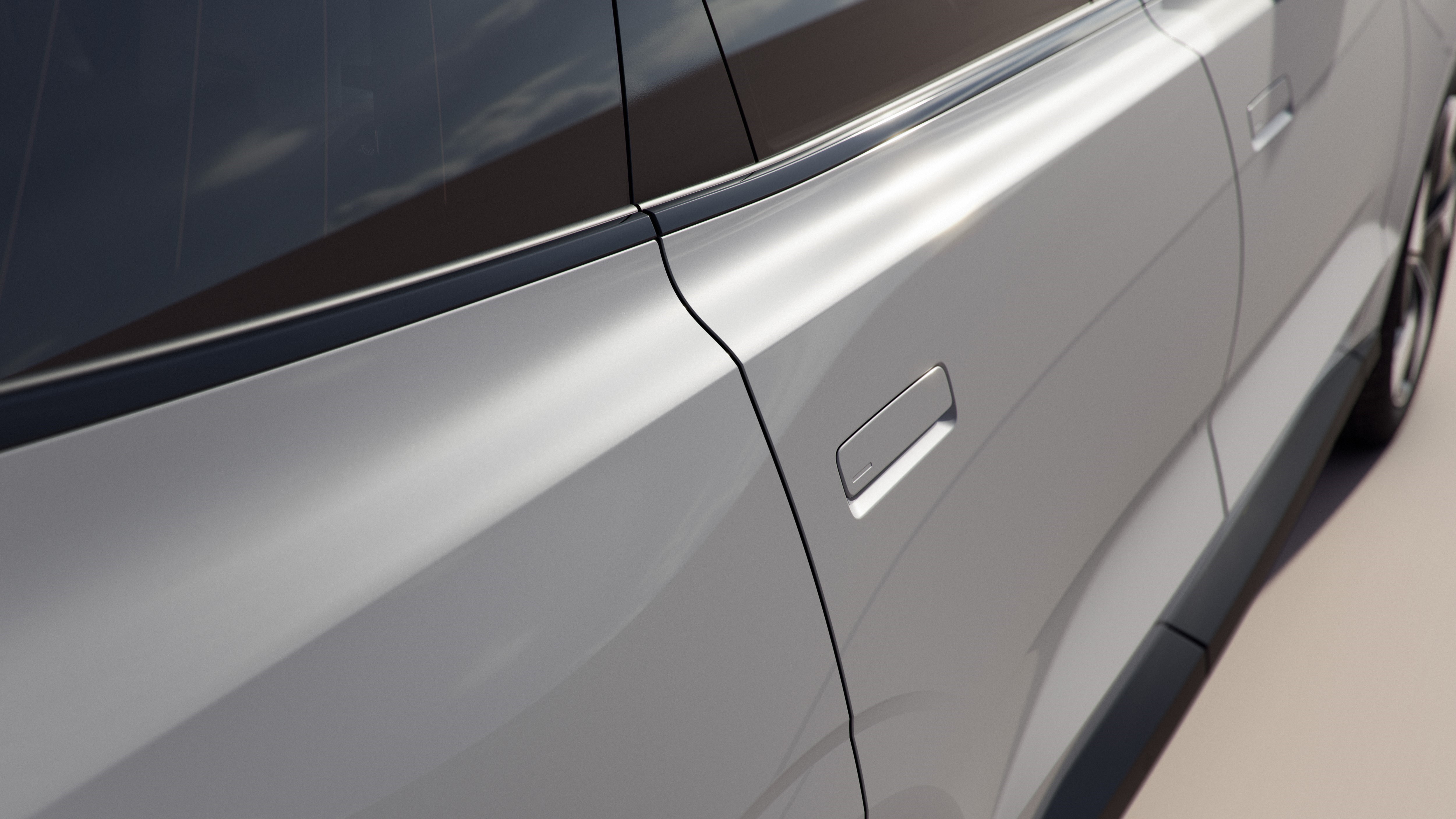Volvo teases EX90 exterior design with new images and video
Volvo's family SUV will be safe, stylish, and slippery through the air


If you weren't already excited about the soon-to-be-announced Volvo EX90, you will be now with the arrival of some artfully shot teaser images.
The EX90 will be Volvo's flagship electric family SUV, and will eventually replace the popular XC90 as fossil fuel-powered vehicles become obsolete. Just like all Volvos, the EX90 promises form, function and technical innovation in perfect harmony.
This new flagship SUV is designed to fulfil a purpose: to be an elegant, efficient fully electric family car, with a higher standard of safety than any Volvo car before it. That's a pretty big claim, as Volvo cars are pretty much known for their safety.
Volvo won't forsake design, however, with the car brand claiming that 'as our in-house designers and generations of other Scandinavian designers have proved many times before, practicality and safety don’t have to come at the price of aesthetics.'
One of the most prominent examples is how Volvo has integrated the lidar, which comes as standard in the Volvo EX90.
Lidar is a remote sensing system that uses a pulsed laser to precisely measure ranges, and it can detect, for example, pedestrians up to 250 metres away.
As Volvo works towards introducing unsupervised autonomous driving, lidar is one of the brand's safety cornerstones.
Get all the latest news, reviews, deals and buying guides on gorgeous tech, home and active products from the T3 experts
As you can see from the image below, the lidar system looks neatly integrated in the roof.

As the EX90 has been designed as an electric car from the ground up, this has given Volvo the opportunity to shape and form the exterior to increase its efficiency.
A good electric car has a slippery, smooth and streamlined surface – aerodynamic drag is the enemy of efficiency. Volvo designed the EX90 with the ambition to optimise its driving range, concentrating on cutting drag and wind resistance.
The sleek and rounded front, combined with elements such as flush glazing and door handles, ensures that air flows uninterrupted towards the rear. These are things that affect the so-called drag coefficient, used to illustrate the car’s aerodynamic efficiency.
Thanks to these exterior design choices, the Volvo EX90 achieves a drag coefficient of 0.29 – for the uninitiated, that’s considered a very competitive number for a large, seven-seater SUV.

For many of the design choices on the Volvo EX90, the source of inspiration ties back to the brand's Scandinavian roots.
The long and light days of Scandinavian summers, mirrored by dark and gloomy winters as the seasons change, inspired Volvo to include a panoramic roof and lots of glass in the cabin, letting as much light in as possible.
Those winters are not only dark, but cold. When picturing a biting cold outside, it’s easy to imagine a cosy fireplace.

Excited? We certainly are! The Volvo EX90 will be revealed on 9 November in Stockholm, stay tuned to T3 for more updates.

As the Style and Travel Editor at T3, Spencer covers everything from clothes to cars and watches to hotels. Everything that's cool, stylish, and interesting, basically. He's been a part of T3 for over seven years, and in that time covered every industry event known to man, from CES and MWC to the Geneva Motorshow and Baselworld. When he's driving up and down the country in search of the greatest driving roads, he can be found messing around on an electric scooter, playing with luxury watches, or testing the latest fragrances.